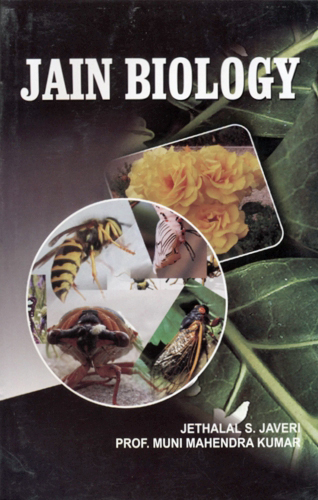The chasm between Religion and Science is quite deep. This is because the scientific mind does not like to accept anything that cannot be experimentally proved while the religious mind needs no proof for anything laid down in the sacred scriptures. The chasm has, unfortunately, prevented mutual interaction, preventing each of them to be benefited by a constructive study of the other side of the chasm.
The wisdom buried in the Jain scriptures and other ancient literature produced by the Jain savants is unlimited. Students of Jainology admit that, many problems of human interest would remain unresolved in the absence of a study of this literature. Regrettably, however, interpretation of this vast literature in modern scientific terms is rather in a scrappy and haphazard form. This essay is an humble attempt to build a small bridge across the chasm with a hope that, "new, interesting and the most fruitful developments will take place" as said by Werner Heisenberg.[1]
Bhagavan Mahavira, being an omniscient, directly apprehended the entire reality and being able to distinguish between what was animate and what was inanimate, he recognized, identified and enumerated six NIKĀYA—groups of living organisms. Of these, only two, the mobile organisms with organic bodies and endowed, more or less perceptibly, with the ability of voluntary motion (trasakāya) and the plants (vanaspatikāya), and recognized by science. The other four groups of living organisms—earth-bodied, water-bodied, fire-bodied, and air-bodied—are not accepted by it. Bhagavan Mahavira, however, clearly recognized the psychical entity in these four elements and declared them to be animate, adding that these four were much more primitive, i.e., the development and evolution of consciousness in these four were of a very low degree. Nevertheless, they were living organisms and belonged to the psychical order of existence and not to the physical order and it was positively a sinful act to kill or injure them. He not only stressed their existence but threw enough light on their ability to experience pain, their life-span and other characteristics also.[2] The minimum span of life of the earth-bodied organisms is an antara-muhūrata [3] only while the maximum duration is twenty-two thousand years.[4]
Their bodies are made-up of molecules of different varieties of earth which also serve them as the sense-organ of touch (which as we know is also the sense-organ of pain). While this consciousness of touch (and pain) is well developed and distinct, the other faculties are latent and indistinct. These organisms breathe and nourish themselves through their bodies, take in earth, water, fire and air.[5]
Now we know that development of life-sciences, such as Biology, came much later than that of Physics and other natural sciences which dealt with lifeless matter, because the former have to study much more complex phenomena which need much finer instruments and apparatus. Plants being more sensitive than other one-sensed immobile organisms, science could study different aspects of plant life and accepted their conscious character and threw light on their mysteries. Enough has been said about the secret life of plants to convince the sceptic about the ability of plants to suffer pain and express anger, affection and hatred etc. Thus science emphatically confirms what was asserted by Bhagavan Mahavira that all one-sensed living organisms are possessed of ten instinctive faculties.[6] In this respect, plants and animals (including man) are not different.
Preaching of 'ahiṃsā' (non-injury) is the most important contribution of Bhagavan Mahavira, inspired by infinite reverence for life. The vow of ahiṃsā is regarded the principle vow while the other four vows of truthfulness etc. are subsidiary ones to help the fulfillment of ahiṃsā. But the essence of ahiṃsā is the knowledge of what is animate and what is not. The basic scriptural knowledge is the science of living organisms - the six nikāyas and non-injury to them. Killing, crippling, mutilating or the most primitive earth-bodied organisms in anyway is sinful.[7] Ahiṃsā is thus interpreted as—abstinence from imposing pain on kind of these six nikāyas.
- Hunger, i.e., the instinct for taking nourishment (āhāra saṃjñā),
- Fear, i.e., the instinct for flight (bhaya saṃjñā),
- Sex, i.e., the instinct for reproduction (maithuna saṃjñā),
- Possessiveness, i.e., the instinct for hoarding (parigraha),
- Anger (aggression),
- Arrogance (egoism),
- Deceit,
- Greed,
- Mass mentality, and
- Cosmic consciousness.
 Jethalal S. Zaveri
Jethalal S. Zaveri
 Prof. Muni Mahendra Kumar
Prof. Muni Mahendra Kumar

